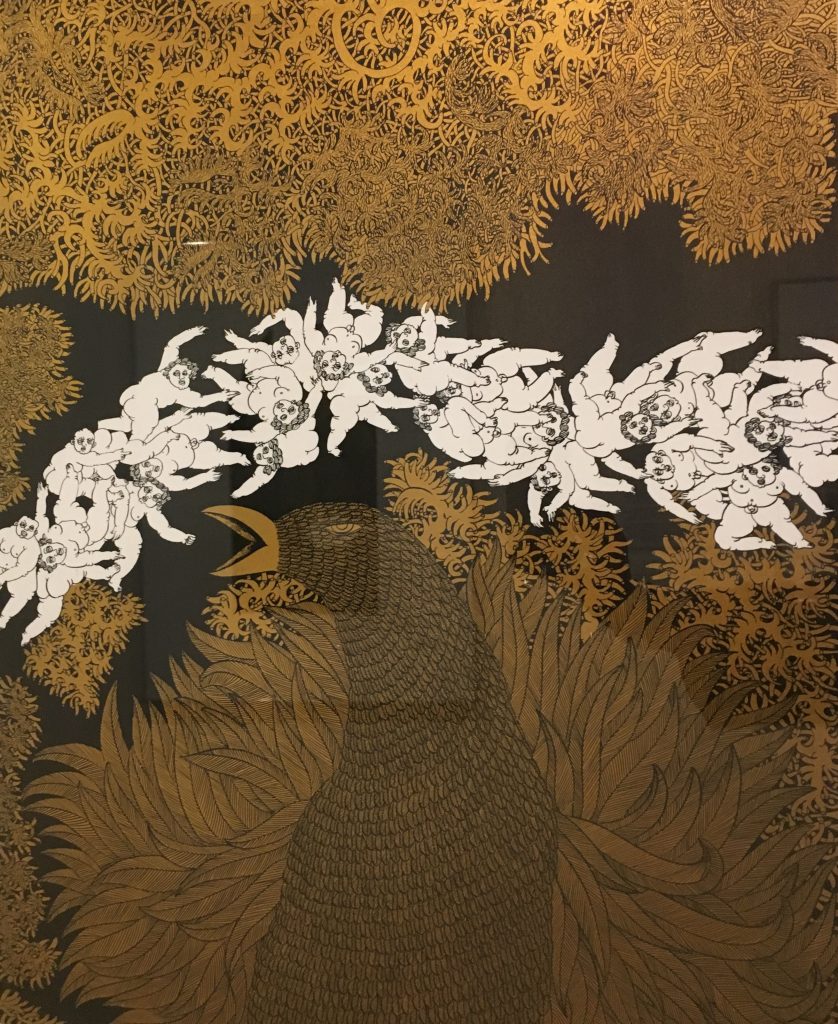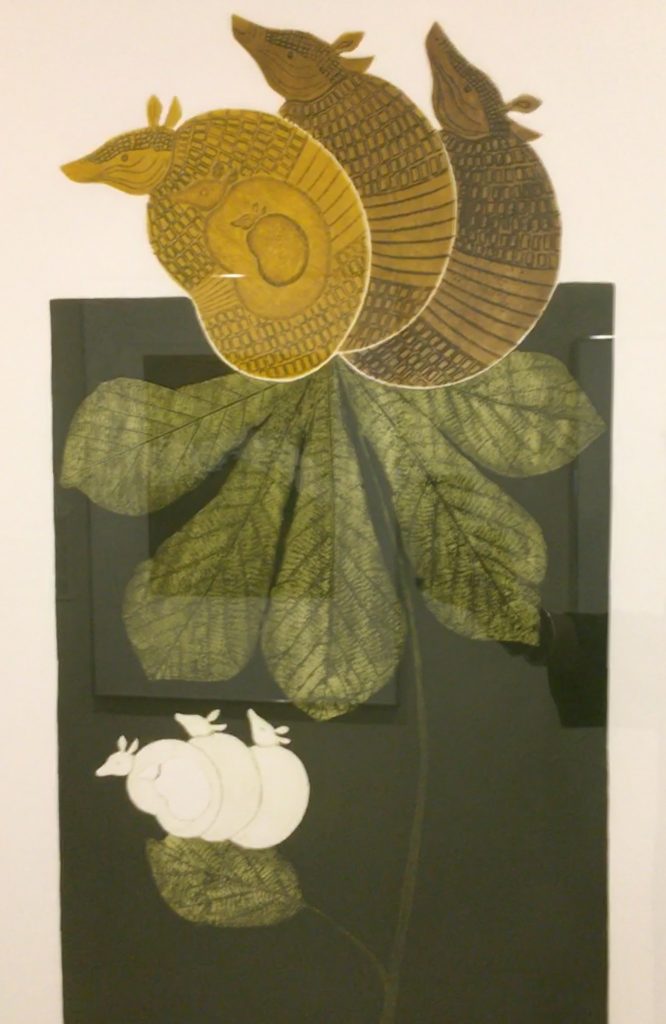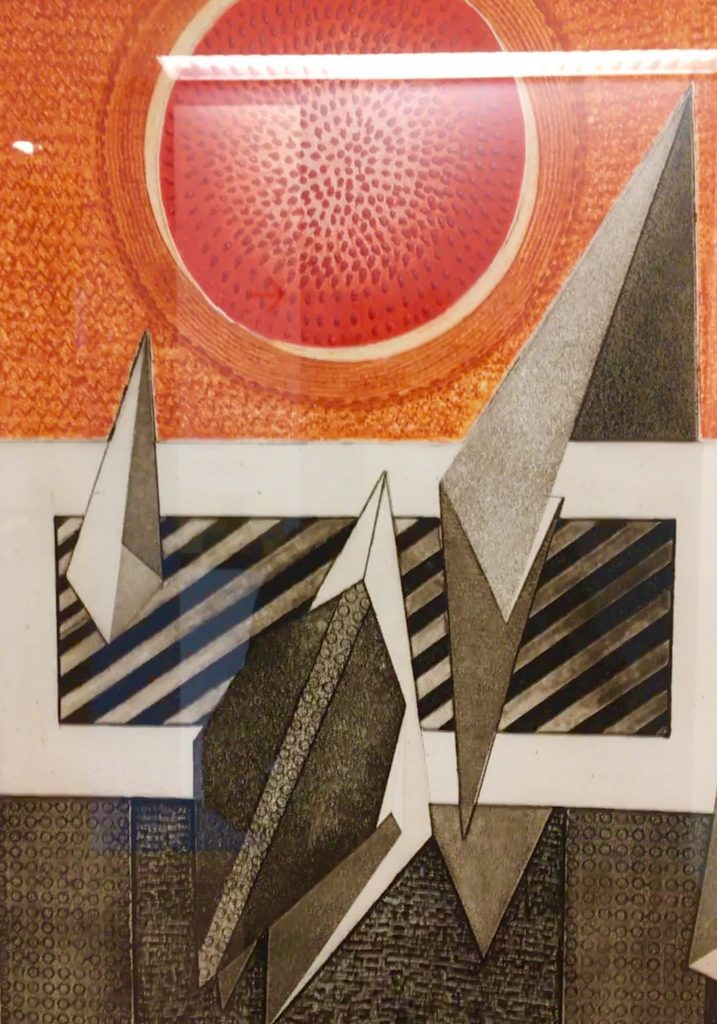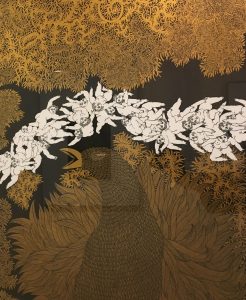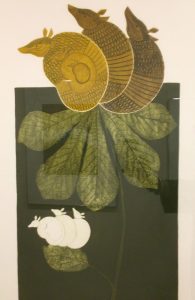The great mysteries of the southernmost countries of Pan America lie in the enormity of its territory, its rich history, and the shroud of chaos and human suffering. But Nobel-winning Mexican poet Octavio Paz beautifully sums up the artistic heritage of these nations. In his preface for the art book Agpa: Artes Gràficas Panamericanas Paz wrote, “printmaking, like the poetry and novels of Latin America; gives us back our confidence in the genius of our peoples. It is both earthly and spiritual nourishment: color and heat, form and idea.”
Color and Heat: Pan-American works from the AGPA Collection at the Smith College Museum of Art is a thoughtful representation of Paz’s summation. The 10 works on display were part of the AGPA project which published prints by artists from Venezuela, Mexico, Guatemala, Peru, Ecuador, and Argentina. This collection includes prints, proofs, and preparatory drawings.
Amherst painter and printmaker Marius Sznajderman and his wife Suzanne donated a generous gift of 89 works on paper to SCMA in 2016. Sznajderman, who lives in Amherst, has always considered himself a Latin American artist even though his family fled France to seek refuge in Venezuela in 1942. His life-long connections to Venezuelan artists led to his coordination of the international editions of prints for Pan American Graphics Arts from 1980 to 1986. All of the prints on display were created between that six-year span.
The Smith College Museum of Art is a stately building overlooking Elm Street/Rte 9 which runs through the campus and connects points east and west in the Pioneer Valley. Like a tiny Metropolitan Museum of Art, the permanent collection includes works by Degas, Sargent, Cezanne, and Monet. The building is bright and well staffed. And in keeping with a big city feel in a small town setting, there is a pricey little museum shop from which to purchase a memory or two. A three-level gallery within the Brown Fine Arts Center, SCMA’s individual galleries are quiet and subdued.
Color and Heat is located on the second level of the museum — just at the top of the stairs. Given the size of Latin America, it is shocking how small the exhibition space is; it’s literally a hallway that connects entrances or exits — depending on your destination. Once acclimated, however, this small 10-piece exhibit packs a powerful punch — which perfectly reflects the nature of all things artistic in Latin American. It’s a bold collection and at the risk of oversimplifying the connections between visual art and literature: each print is like a novel poised to tell a larger story. Latin America’s rich histories are imbued in not only the prints’ subjects but in the colors and details, as well.
Henry Bermudez’s print El Parajo (the Bird) is a fantastic journey into history, Aztec mythology, and morality. At first glance, the eye is drawn to an entangled parade of white, over-fed cherubic figures floating above an imposing bird. The bird is a powerful symbol in Aztec mythology and represent the qualities of courage, strength, and skill. The floating white bodies represent the Spanish Conquistadors and their eventual conquest of the Aztec Empire in 1521. The promise of gold was the lure that kept Cotez and other invaders coming “down the river.” The majority of the print is intricately textured gold leafing, but Bermudez’s brilliant use of the white bodies floating through a jungle of intricate gold leaf is stunning. The bird’s beak is open – the white figures seem as though they may fall prey to it. Instead, we know the bird falls prey to the invaders. But the strength, courage and skills of the Aztec people as represented by the parajo, lives through history and the ruins of the Aztec Empire attest to its former power.
Other intriguing prints include Brazilian artist Ruth Bessuodo Courvoisier’s Cachicamo Flor (Armadillo Flower). Again using gold to invoke the richness of the subject, the three-banded armadillo, the artist has drawn three armadillos atop a drooping green leaf. Like a Russian nesting doll, three armadillos rest inside one another. After a bit of research, it turns out armadillos are chiefly solitary, but this species peculiar to Courvoisier’s Brazil will occasionally travel in small family groups of up to three members.
Other prints include artists from Puerto Rico, the Dominican Republic, Uruguay, Chile, Argentina, Peru, and the United States (represented by Sznajderman). One can only speculate as to why the curators chose these particular 10 prints to represent Sznajderman’s sizable donation of 89 works. A larger selection would have been more satisfying, to say the least, given the number of countries that make up Pan America — including the U.S. and Canada. But as it stands, Color and Heat is an exciting if not brief excursion into another world filled with wonder.
Color and Heat: Pan-American works from the AGPA collection will be on display through March 11 at Smith College Museum of Art, 20 Elm St, Northampton. Gallery hours are Tuesday – Saturday, 10 a.m.- 4 p.m. and Thursdays 10 a.m.- 8 p.m. 413-585-2760. smith.edu/artmuseum.

